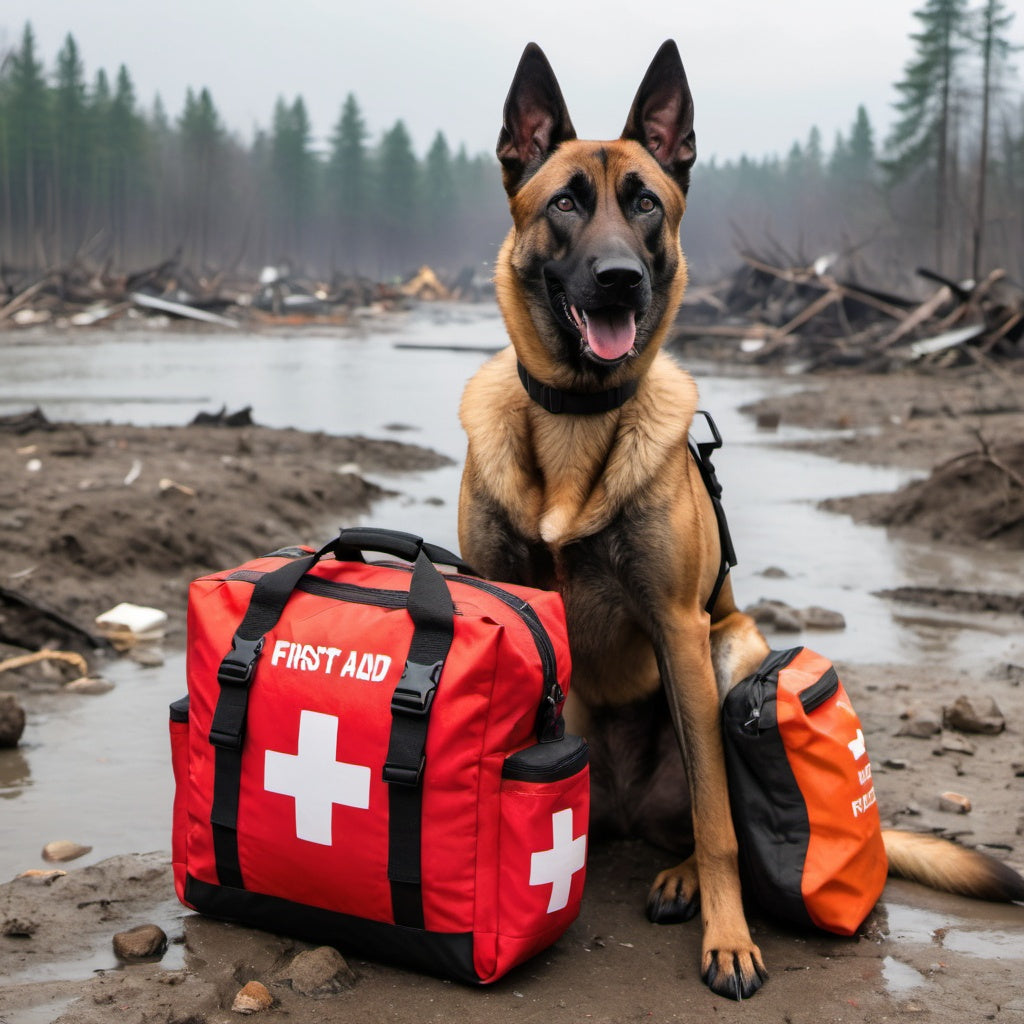
How to Prepare Your Dog for Emergencies: A Guide to Creating a Dog Emergency Kit
Share
Emergencies like floods, forest fires, and other natural disasters can strike unexpectedly, leaving you and your family & pets in a vulnerable position. As a responsible pet owner, it's crucial to have a plan in place to ensure your dog's safety and well-being during such events. One of the most important components of this plan is a comprehensive dog emergency kit, which should include essentials to keep your dog safe, comfortable, and healthy during an emergency situation.
1. Prepare a Go Bag for Your Dog
A go bag is a portable kit that contains essential items your dog may need in an emergency. Here's a list of items to include in your dog's go bag:
-
Food and Water: Pack at least a three-day supply of your dog's food and water in airtight containers. Include a collapsible bowl for easy feeding and watering.
-
Medications: If your dog takes any medications, pack a supply that will last at least a week. Include a copy of your dog's medical records and a list of medications and dosages.
-
Leash, Collar, and ID Tags: Ensure your dog has a sturdy leash and collar with updated ID tags that include your contact information. Consider including a reflective vest or collar for visibility in low-light conditions.
-
Bedding and Comfort Items: Pack a blanket or towel for your dog to rest on, as well as a favorite toy or chew to provide comfort and reduce stress.
-
First Aid Kit: Include a pet first aid kit with items such as bandages, gauze, antiseptic wipes, and tweezers. Familiarize yourself with basic pet first aid procedures before an emergency occurs.
-
Sanitation Supplies: Pack poop bags, a small shovel, and disinfectant to clean up after your dog.
-
Recent Photo and Description: Keep a recent photo of your dog and a written description of their appearance and identifying features in case you become separated.
2. Create a Pet First Aid Kit
In addition to the items included in your dog's go bag, it's important to have a dedicated pet first aid kit. This kit should contain supplies to address common injuries and emergencies that your dog may encounter. Here are some essential items to include:
-
Gauze Pads and Rolls: Use these to dress wounds or create a makeshift muzzle if necessary.
-
Adhesive Tape and Bandages: Secure dressings and provide support for sprains or strains.
-
Antiseptic Wipes and Hydrogen Peroxide: Clean wounds and induce vomiting if directed by a veterinarian.
-
Scissors and Tweezers: Use scissors to cut bandages and tweezers to remove splinters or ticks.
-
Rectal Thermometer: Monitor your dog's temperature in case of fever or heatstroke.
-
Emergency Contact Information: Include contact information for your veterinarian, local emergency veterinary clinic, and animal poison control center.
3. Maintain and Update Your Emergency Kit Regularly
Regularly check and update your dog's emergency kit to ensure that all supplies are current and in good condition. Rotate food and water supplies to prevent spoilage and expiration. Review your emergency plan with all family members and ensure everyone knows their role in keeping your dog safe during an emergency.
4. Include Copies of Your Dog's Medical Records and Know Your Emergency Vets
-
Medical Records: Include copies of your dog's medical records, including vaccination history, medications, and any relevant health information. This information can be crucial in case of injury or illness, especially if you need to visit a vet during an emergency.
-
Emergency Veterinary Clinics: Research and note down the locations and contact information of emergency veterinary clinics in your area. Familiarize yourself with their hours of operation and any special instructions for emergency visits. Keep this information in your dog's emergency kit for easy access during an emergency.
5. Maintain and Review Your Emergency Plan Regularly
Regularly review and update your emergency plan to ensure that it remains effective and relevant to your dog's needs. Practice evacuating with your dog and ensure that everyone in your household knows the plan and their responsibilities. By staying prepared and informed, you can help ensure the safety and well-being of your furry companion during emergencies.
Being prepared for emergencies is essential when you own a dog. By creating a comprehensive dog emergency kit and familiarizing yourself with basic pet first aid procedures, you can ensure that your furry friend stays safe and healthy during challenging times. Remember, your preparedness could make all the difference in an emergency situation.